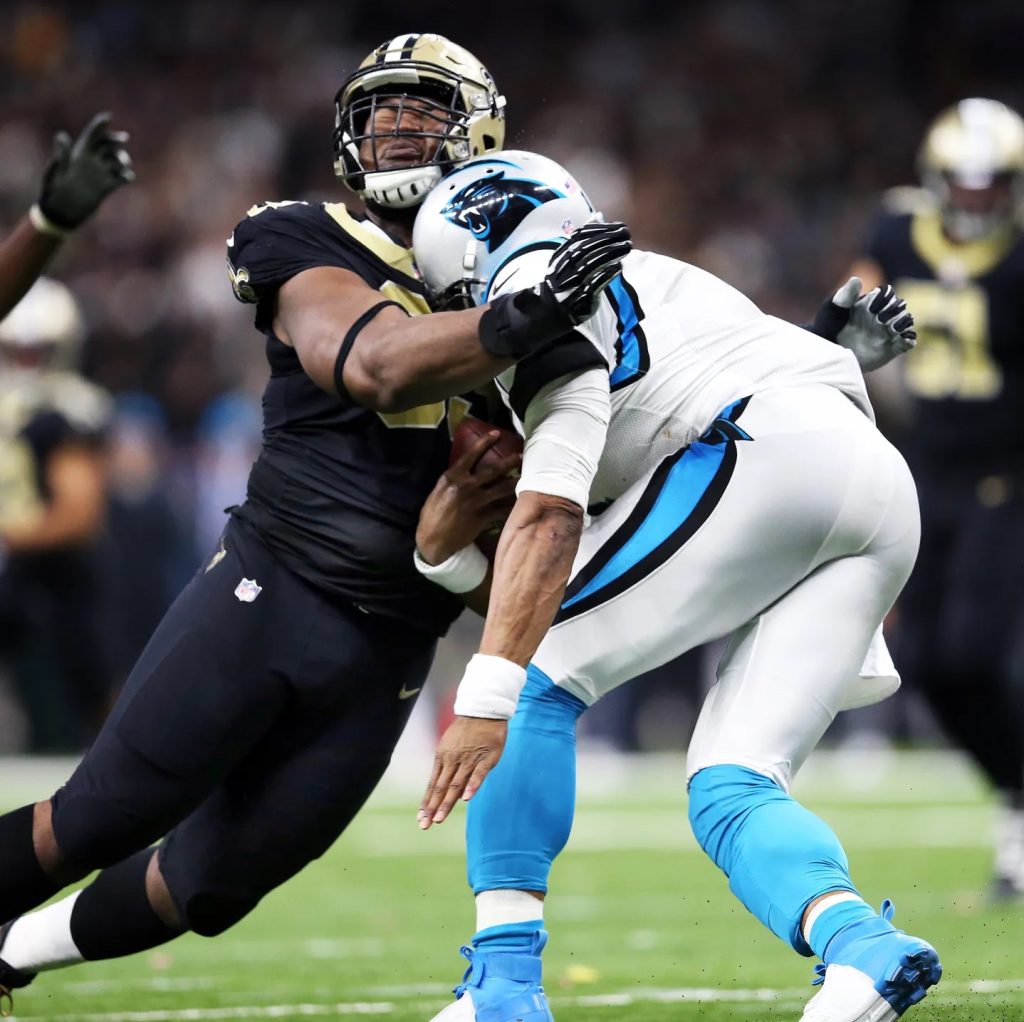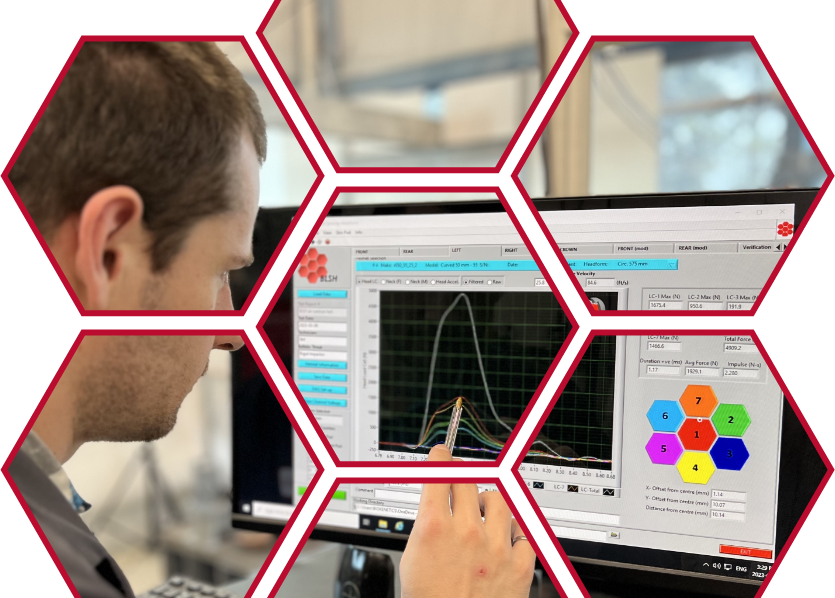Understanding Position-Specific Safety Testing
Position-specific safety testing is intended to evaluate football helmet design based on the specific risks and impact forces experienced by players in different team positions. Where traditional helmet testing focuses on a developing a uniform standard that disregards position specifics, positional evaluation understands that different roles are exposed to different kinds of impact, especially in regards to directional force etc. Impact variances from position to position can include:
Offensive Linemen
NFL research has found that Offensive Linemen are most often exposed to very low, low and medium speed impacts to the front and side regions of their helmets and occasionally low and medium speed falls to the turf at rear and side impact locations. Overall performance scores as tested by the NFL’s annual rankings test method weight the scores of the front and side regions most highly. The NFL’s OL helmet protocol includes a total of 25 impact tests.
Quarterbacks
Quarterbacks endure low, medium and high-velocity impacts from all directions and can be particularly subject to being blindsided by hits or tackles during key play points. They also are now tested against low and medium speed hits against the turf. Overall performance scores in NFL helmet rankings for quarterbacks weight testing scores highly on the impact with the turf. The NFL’s QB helmet protocol includes a total of 21 tests.
Defensive Linemen
NFL research has found that Defensive Linemen experience the widest range of impacts, including all scenarios of the OL and QB positions. These include very low, low, medium and high speed hits to all helmet regions as well as medium and low speed hits against the turf, with weighting on hits to the forehead and upper side locations. The NFL’s DL protocol includes a total of 32 tests.
Benefits of Position-Specific Helmet Testing
Position-specific helmet testing affords multiple benefits, including:
Enhanced Protection
The specific data afforded by positionally specific assessments help to create thorough “impact profiles” for each position. This information enables manufacturers to develop advanced design considerations that offer superior protection where it’s needed most for each player. From reinforcing different areas, improving padding in others, there’s a wide variety of options afforded by position specific testing.
Reduction in Concussions and Head Injuries
Impacts to the head at the OL and DL positions are predominantly at lower speed, but there is concern that repeated head impact, even if not causing acute concussion, might have lingering unmeasurable effects. Targeted testing and design can help reduce the risk of concussions and other head injuries. As mentioned above, position specific testing allows manufacturers to design around unique impacts and create helmets that can better absorb and distribute the forces, minimizing the likelihood of injury.
Implementation of Position-Specific Testing
To conduct position-specific testing, extensive data collection from games and practices is essential. Sensors and video analysis can track the frequency, location, and severity of impacts for players in different positions. This data helps identify patterns and informs helmet design and testing protocols. Custom protocols may also be implemented to adjust for and accommodate real world impacts and evolving concerns like repeated low-speed impacts to the front or high-speed impacts to the sides and back.
Challenges and Considerations
Position specific testing has plenty of benefits, but is not without it’s share of challenges. For example, developing multiple helmet designs for different positions can be costly and complex. It is also not clear that impact speeds, locations and frequencies at the professional level are the same as at high school and college levels. Also at lower levels of play, there may not be sufficient budgets to have such a wide selection of helmets and sizes to accommodate position specific designs. Player and league acceptance is another hurdle to overcome, as is the need to collaborate with regulatory bodies to help integrate these advanced helmets into the broader safety framework for the sport.
Evaluating for Safer Athletics at Biokinetics
At Biokinetics we bring decades of experience and industry-leading insights to blunt force trauma and equipment testing to help ensure the highest standards of protection. Our state-of-the-art facilities and rigorous testing protocols ensure that every piece of equipment is evaluated meticulously.
We are proud to be at the forefront of helmet safety testing, providing the expertise and assurance needed to protect athletes on the field. Learn more by contacting our team today!


